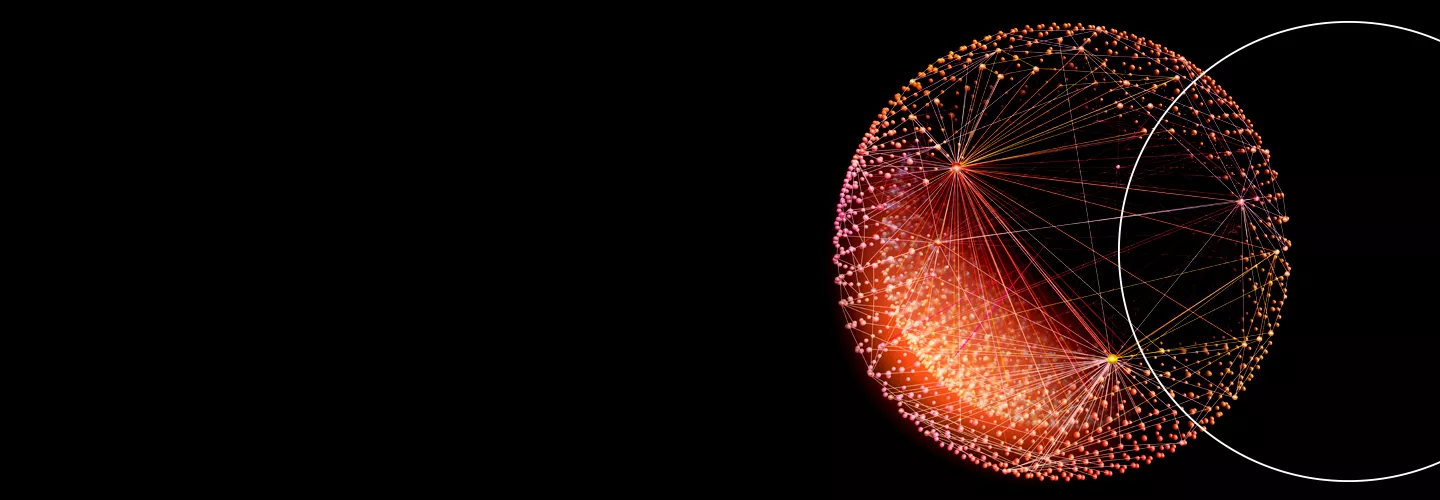September 2022
The midst of a crypto winter, or downturn in the cryptocurrency market, is a timely occasion for a discussion about digital assets. When better to dispel the myth that digital assets are only for investment and note that volatile cryptocurrencies are just one kind of digital asset?
To coincide with the recent publication of our Tokens on a chain report, we chat with Tancho Fingarov, global crypto practice and business development lead, and Donald Ong, senior vice president of business development.
What are decentralized digital assets, and why are people talking about them?
Tancho:
Digital assets are anything that operates on a blockchain network. The blockchain networks can be two types: one is permissionless, the other is permissioned. Permissionless is basically a public network. On the permissioned side, there is usually an authority that grants access.
In the permissionless world, we have crypto assets that can be broken down into fungible and non-fungible tokens (NFTs). The non-fungible tokens are unique—they are one of a kind. Most popular NFTs are projects around art. In my view, the technology will move into more real-world use cases. You can use NFTs for legal contracts for example … You can digitize pretty much everything that is unique.
Then we have the permissioned world. Central bank digital currencies (CBDCs) are an example of permissioned digital assets. The central banks control the network and give permission to who can use the network. And then you have a hybrid where certain things can live in the permissionless and the permissioned world. Stablecoins are one of them.
How is Mastercard helping people navigate this landscape?
Donald:
There are new technologies, new regulations, and consumer preferences that are evolving. All this is coming together to give rise to new issues and opportunities: cryptocurrencies, cybercrime, open banking and ESG. That's why we are expanding our consulting business. We are building and establishing dedicated practices so we can help our clients navigate these new trends. One of the new practices is the Crypto & Digital Currencies practice.
Crypto as a space is fascinating. Ten years ago, we barely talked about this. Ten years later, it's everywhere. There are trillions of dollars traded in crypto every year. It's an ecosystem that is multi-currency and multi-chain, and there are tons of players across the value chain. But no-one really understands the space well enough—especially the mainstream audience in terms of the threats, opportunities, and actions that a business might take.
Businesses can't sit on the sidelines anymore. They risk being irrelevant to a whole new generation of crypto-native customers. We are focused on helping clients understand the space and chart a path that positions their businesses well. Let me give you two concrete examples. We have engagements where we help central banks design and deploy central bank digital currencies. Another example is how we are helping our clients assess consumer demand and attitudes, design a value proposition, and go to market with our carefully curated crypto-native partners as well.
What's the most common myth about digital assets that you'd like to bust?
Tancho:
“Digital assets are only for investment.” Over the last several years, there has been a very big infrastructure build in digital assets that has nothing to do with investments. Corporates have been doing a lot of work in using digital assets for payments, provenance, operational improvements … The majority of investments have gone into the wholesale space: cash management, trade finance, capital markets capabilities, institutional digital custody …
And on the retail side, banks are trying to tokenize private assets. Take a private equity portfolio, tokenize it and then sell it to your customers. Usually, things like that are only available to private clients. This democratizes the space and pushes it down the value chain. Another thing is digital custody. We’ve done a survey in Asia Pacific—most customers prefer to keep their digital assets with banks because they perceive that they're safer.
What are the main challenges that we encounter and how can we help organizations set themselves up for success?
Tancho:
There are four main problems that clients have. Number one is they don't understand the space. So, we have our crypto educational platforms.
The second category is businesses that understand the space. They usually pick one proof of concept and build it. But a couple of years later, when it doesn't generate revenue, they scrap it. So, we usually look at use cases in the corporate world and crypto world and at the overall strategy. We then build a business case that is actionable. The next step is to build a target operating model. You need to think not only about the infrastructure, but how you incorporate this into the broader tech stack, how you integrate this into your governance, processes, broader ecosystem ...
Number three is customers that have the use cases but don't have the technical capabilities. That's a big bottleneck in the entire industry. The technical skillset is very rare because the industry has, de facto, been around for the last two, three years ... We help them build the products. We started with crypto cards, which was natural for us, but we are expanding to help them build NFT programs and NFT marketplaces, use cases in the metaverse and digital wallet functionality.
And then the final bucket is how you manage risk. Customers usually try to push crypto risk down the traditional risk management framework. That rarely works. You need different tools to manage money laundering in a crypto world. All those nuances need to be managed.
For people who want to understand more, where can they go for help and what would the next steps be?
Donald:
What we do in the consulting space has historically been about advising clients about payments—and increasingly in areas beyond payments: crypto and digital currencies, cybersecurity and risk consulting, open banking and ESG.
What really sets us apart is how we power up these engagements. There are three distinctive elements. First, we power it with our data: the rich real-time insights that we have as a global payments network. Second, we power it with our expertise: the talent of our 2000-strong data scientists, engineers, consultants around the world. Third, we power it with technology. It's the combination of these three elements: data, expertise and technology. That's how we help clients make smart decisions and help them get better business outcomes.
If you’d like to find out more, please get in touch with any of our practice experts.
To watch the unabridged version of our discussion with Tancho and Donald, visit our Inner Circle podcast series.














